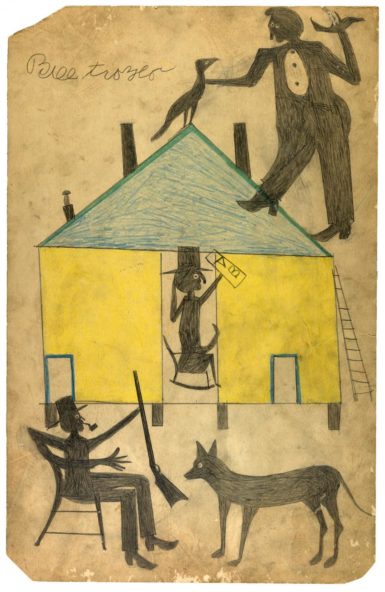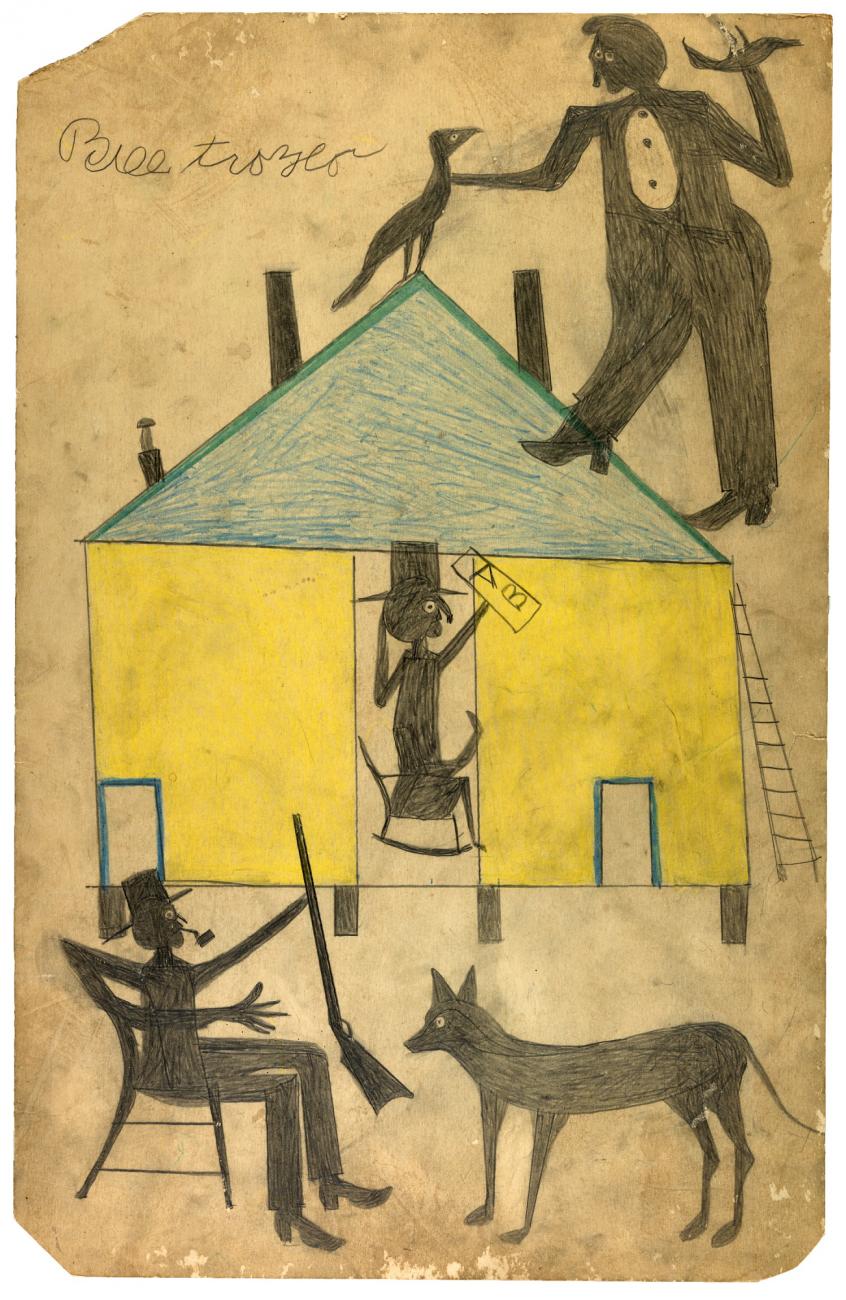[ad_1]

Off view until further notice: Bill Traylor’s Untitled (Yellow and Blue House with Figures and Dog), July 1939, which is included in the Traylor retrospective at the Smithsonian American Art Museum in Washington, D.C.
PHOTO: GENE YOUNG/SMITHSONIAN AMERICAN ART MUSEUM
In Washington, D.C.’s museum world, 2019 is beginning with a whimper.
As the partial shutdown of the federal government enters its second full week, all Smithsonian museums and many other agencies in D.C. and beyond have shuttered for lack of funds, or are getting ready to close for an indefinite period. Among those closed on Wednesday were the Hirshhorn Museum and Sculpture Garden, the National Air and Space Museum, and the National Zoo in Washington, D.C.; the National Museum of the American Indian in D.C. and New York; and the Cooper Hewitt Smithsonian Design Museum in New York.
The National Gallery of Art, which is not part of the Smithsonian but receives significant government funding, was open, but if legislation is not passed to provide funding by midnight tonight, it will also close Thursday, according to a press representative.
The shutdown began at midnight on December 22, but some cultural institutions were able to keep operating by cobbling together unspent funds that have now run out. (The National Endowment for the Arts and the National Endowment for the Humanities, by way of contrast, ceased operations immediately.)
The shutdown is the result of lawmakers leaving town for the holidays without passing a budget that President Trump said he would be willing to sign. The President has insisted on $5 billion being allocated for a wall along the U.S-Mexico border and said last month that he would be “proud to shut down the government” if his demands were not met. (Since then, he has blamed Democrats for the closure.)
While museums lie dormant and their workers go unpaid, clocks are ticking on the run of temporary exhibitions. At the Hirshhorn, a show of recent paintings by the Irish-American painter Sean Scully is set to end February 3. Asked on Wednesday about the federal paralysis, Scully said in an email via his gallery Cheim & Read, “The Hirshhorn is a government museum, so it necessarily follows that if there’s a government shutdown, the Hirshhorn will be shut. The bigger question is, why do we have the government we have? And what is it doing to the dignity of America?”
The Mexican-Canadian artist Rafael Lozano-Hemmer has also had a Hirshhorn show suspended from view as a result of the political turmoil. “I see this as a stark reminder of the current administration’s belligerence and my thoughts go out to the federal workers affected and in general to the dire consequences that Trump’s actions have on the country and the planet,” Lozano-Hemmer said in an email. “As a Mexican, it’s ironic that the shutdown happens because of Trump’s insistence on building an unnecessary wall—one which according to his promises was going to be paid for by Mexicans. I look forward to the end of the shutdown and hope my exhibition can ‘build bridges’ between our countries.”
Not far away, at the NGA, Dawoud Bey is showing photographs from his “Birmingham Project” series, which centers on the bombing of the 16th Street Baptist Church in that Alabama city in 1963. (The show is scheduled to run through March 24.) As of Thursday, it could be temporarily off view. “How unfortunate that this administration that has already created havoc in the lives of so many has now caused the shuttering of the nation’s great museums, denying access to the works on display there to so many while callously denying a paycheck to the many staff who are the custodians of that work,” Bey said in an email, via Mary Boone Gallery, which represents him in New York. “Access to culture is just as much a right as any other, and the president seems intent on scuttling this right too. Shameful . . .”
If the NGA is closed on Thursday, another exhibition suddenly going dark will be “Gordon Parks: The New Tide, Early Work 1940–1950,” a retrospective for the storied American photographer that is scheduled to run through February 18. Reached by email, Peter W. Kunhardt, Jr., the executive director of the Gordon Parks Foundation, said that his organization “stands with all the artists today whose work will not be accessible during the government shutdown. It is really important that the voices of all artists be heard.”
This is far from the first time that federally funded museums have had to deal with the government being unable to pass funding legislation. During the winter that stretched from 1995 to 1996, many institutions were forced to close as a result of two shutdowns, with the NGA being fully shuttered for 10 days during the second. After that, private funds were used to keep open a Vermeer exhibition while the rest of its galleries remained closed.
Other major shows that are, for now, closed to the public include a long-anticipated Bill Traylor retrospective at the Smithsonian American Art Museum, a Charline von Heyl survey at the Hirshhorn, and a Ken Gonzales-Day and Titus Kaphar two-person affair, set to finish its run on Sunday at the National Portrait Gallery. And that’s just the tip of the iceberg.
Some art-historical research done by the Smithsonian is, at least, continuing unabated. The Archives of American Art is in business in both D.C. and New York, for instance, because many of its workers are paid via trust and because it does not operate out of a federal building.
Those looking for art action in the nation’s capital do, at least, have some options, like the visiting the Phillips Collection, which is not funded by the federal government. The Washington Post reports that the museum is offering free admission to employees of the federal government, and that during the shutdown of 2013, its attendance more than doubled.
[ad_2]
Source link

